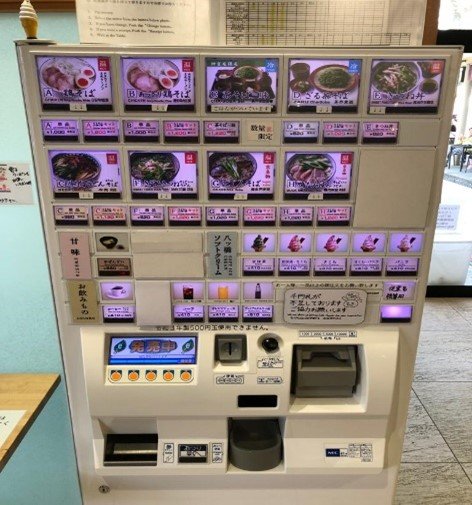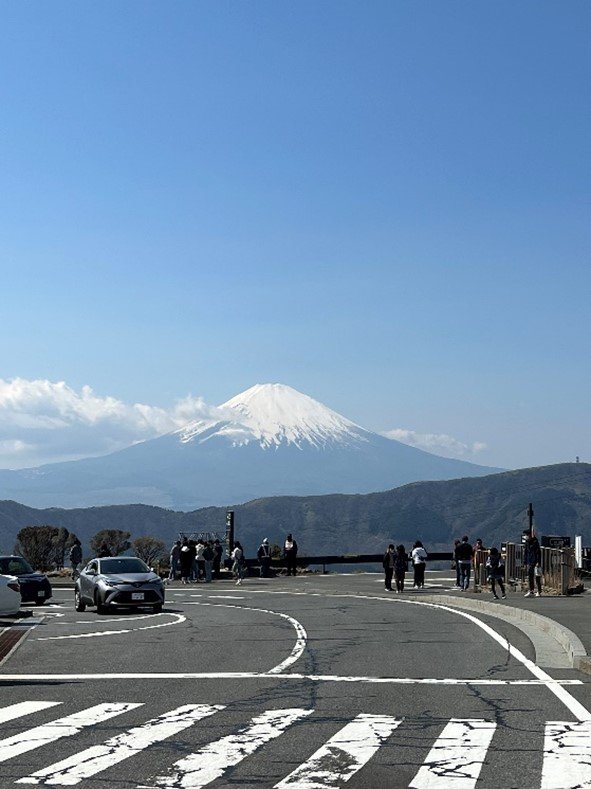Lessons From The Land Of The Rising Sun
Tuesday, 02 May 2023By Amit Sharma
The garden fence is tilted, the shower handle is on its last legs and the last lick of paint around the house may have been before Brexit. The lack of workers and handymen has become a fact of life here in the UK, as around 3.6m men aged between 16-65, are now termed as ‘inactive’. Meanwhile, we are repeatedly told that demographic changes particularly in the far east, will result in a devastation of their economies, as young people decide to have fewer children. I wanted to explore how this was transpiring in Japan, a county I have lived in and is close to my heart, how are they managing with a rapidly declining and ageing population and what lessons can we take from Japan to survive the likely changes in our workforce and demographics. These are of course observations of a tourist armed with schoolboy Japanese and much like an umbrella protects against the rain, Japanese society is adapting to life with a smaller workforce.
The Challenge
Whilst most developed economies are ageing, none as fast as Japan, where the ratio of the population aged over 65 (the official retirement age) is around 30% and it is expected that there will be a shortfall of 11 million workers in the next 15 years. The statistics seem bleak, but there is little coverage on what the country is doing to prepare and adapt for these changes, which based on my recent visit were very interesting and perhaps something we can learn from.
Automation
Japan has long been famous for its electronics industry and automation is a natural step for it to turn to, as a means of saving labour. As with the UK the shortage of labour is likely to be most acute in sectors such as hospitality, construction, agriculture and of course lorry drivers! However, small steps are being taken especially in hospitality, which are allowing fewer people to do more. For example, some hotel chains (such as the 4-star, Fav Hotel) provide automated check-in, no manned reception from 10pm to 7am and no room cleaning throughout your stay. On the brighter side, there is a washing machine and dryer in each room.

Similarly, in the photo you can see how ordering at many restaurants work, where dinners must select their meal, drinks and often the order in which they want them before entering. This has been around for a while, and it allows restaurants (particularly ramen shops) to be run by just a couple of people. The menu is from Kyoto and thankfully has an English translation, the vast majority don’t, which often leads to a ‘potluck’ dinner.
Flexible Workforce
In the Great Resignation, it was common to see workers in their 50’s and above, with generous pensions leave the workforce altogether. With a life expectancy in the UK of just over 80 years (closer to 85 in Japan), this is leading to a generation who enjoy the most leisure time ever in history. The good news obviously comes at a cost, as it generates a double whammy for the economy of less workers contributing to the tax take and also increased pension and healthcare costs. Looking to change the status quo in western democracies has been quite a challenge, as President Macron recently found out, as he looked to increase the retirement age from 62 to 64 in France.

Whilst Japan also has a retirement age of 65, its common to see ‘elders’ continue in the workforce until much later in their twighlight years and the example of Mr. Kuda below is interesting. In a busy traffic intersection in the Namba area of Osaka, Mr. Kuda has spent the last 24 years ensuring that traffic and the massive numbers of pedestrians that cross both straight and diagonally move smoothly.
As a lost tourist in the City, I seemed to keep coming back to Mr. Kuda who despite the stormy conditions and with little less than a plastic sheet continued to direct traffic enthusiastically with almost a dance like routine during his 8-hour shift from 8am to 4pm. He is 76 and intends to work until 80, he shared with a mischievous smile and then added what else would I do sitting at home?
The basic pension in Japan is around $500/month and the ability to top this up with extra work is popular, as a number of job agencies have opened, targetting workers over 60. The Japanese Government also provides subsidies for small and medium sized companies to provide facilities for older workers, such as additional rest areas. More than 50% of those aged 65-69 are economically active and those over 65 make up close to 15% of the work force.
Health is Wealth

One of the first observations that you have when landing in Tokyo from London is how slim everyone is, Japan was famed as a country that ‘got rich without getting fat’. This is not by accident however and despite the slew of fast-food chains, hearty broth-based noodle soups, deep fried tempura and patisseries that in my view have the best puddings in the world, people remain slim. This is partly by design and all private and government workers in Japan from the age of 40 to 74 are required, as part of their annual medical check up to have their waistlines measured. The guideline is 33.5 inches for men and 35.4 inches for women, I failed and as with others in my camp was steered towards re-education and as a resident, would have been subject to another measurement in 6 months’ time.
The rationale from the country’s ministry of health is twofold, firstly obesity is an easy guideline for weight related ailments, such as diabetes and strokes and secondly in a rapidly ageing society it will help to rein in ballooning health care costs. In contrast in the UK, nearly 5m people are living with diabetes and the numbers that are signed off as unfit to work is increasing rapidly. Despite being a fairly draconian approach and the actual measurement process was a little uncomfortable, an economy and its workforce cannot be measured on numbers alone and like a football team, there is no point having lots of players, if half of them are not available to play and supporting fitness and health will lead to the longer-term wealth of the country.
Rural Urban Divide
The picture so far looks pretty rosy in cities like Tokyo and Osaka, which continue to attract the brightest minds from across the country. However, further afield, the impact of an ageing society can be felt most in smaller towns and villages. The well-trodden path of reduced school admissions, health, transport and other facilities either closing down or merging within the localities, leading to more young people being attracted to the bright lights. This trend has been a worldwide phenomenon for many years, but in an ageing society, the speed at which functioning towns can transform into ghost towns is incredible. When I lived in Japan over 20 years ago, towns and cities across the nation were always found in pristine conditions, but visiting Kumamoto and the Mount Aso area in the southern Island of Kyushu, it was possible to see some deterioration around the edges.

Kayuri-San is 93 years young and has spent the last 60 years making Ikinari dango (a combination of sweet potato and red bean) with a starchy taste and packed with energy, originally for farmers taking advantage of the rich volcanic soil, but now for tourists keen to climb up to the caldron summit of Mount Aso. She lamented on how things had changed over the last few years and although the tourist business remains strong, particularly after the lock down, village life for her and her son in his 70’s is increasingly difficult as more shops and facilities shut down in the area and families move away. In fact, the Government is cognizant of this problem and is currently offering Tokyo based families an amount of 1m Yen ($7,500) per child to move to unfashionable parts of the country that are being hit most by the shrinking population. Unfortunately, the take up so far has not been that strong and it’s unlikely that there will be many takers for the Ikinari dango business, once Kayuri-san does finally choose to hang up her apron and with it we should not be surprised if a number of towns and villages are left empty in the coming years.
Looking Ahead
There are frequent references to the ‘demographic dividend’ that China experienced in the early 2000’s, with lots of people joining the work force and allowing them to build and develop a manufacturing powerhouse, coupled with growing domestic consumption. Could the opposite be a demographic penalty and is Japan experiencing this right now? My sense is the answer is no, as once a country is as developed as Japan is, with a service-based economy, high levels of automation and top tier infrastructure, do you still need hordes of young people. Sure, domestic consumption will change, but with many living to and above 100, doesn’t the definition of young and middle age just stretch a bit. The photo below is of the legendary Mount Fuji, which can only be climbed during a couple of months in the year and as I lumbered my overweight body up the steep climb, there were several 70- and 80-years old clambering to take over me, adding to the adage that ‘age is just a number’.
Clearly there are massive cultural differences between Japan and the UK and it’s unlikely that many of the objectives used there will work here. At the same time, the problems that we both face with an ageing society are similar and using the sporting analogy it’s not just the age or size of your squad that is important, but the form and fitness. As we expect economists to fill pages with doom and gloom articles around the reducing size of the labour force and need for immediate immigration, it’s worth bearing in mind that Japan has an uncanny ability to surprise conventional thinkers as Spanish and German football fans experienced in Qatar. After all there were still very few tilted fences or unpainted buildings on view in my most recent trip to the land of the rising sun.
